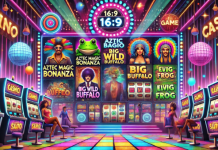For years there have been news stories about smart stores, retail outlets where virtually every part of the shopping experience is automated. Stores that can be run with very few or no staff. But most of these stories were about 0utlets that had been set up to test the waters and help designers and engineers to find and address the tech snags.
But over the past few years, retailers have finally managed to take these concept stores and turn them into real, live operations. Shops that any consumer can use. Here are a few examples.
Scan and Go cashless shopping
In Australia, and many other countries, cashless shopping is becoming far more widely available. This style of shopping allows consumers to use their smartphones to scan items as they put them in their baskets or bags. Then, pay using the app. At which point they can leave the store via the exit that has been set up for scan and go, cashless shoppers. The Woolworths and 7-eleven chains were both early adopters in Australia. It is an approach that has proved to be extremely popular with shoppers. So much so, that both chains are rolling out the system to more stores.
Amazon Go and Amazon Fresh
Amazon has taken the concept of scan and go a few steps further. Currently, they have four stores up and running in US cities and one in London. Using a combination of AI, deep learning, geofencing, sensors, and computer vision the technology can detect what a customer picks off the shelf. If they hang on to it that item is added to their bill. When they have finished shopping, they simply walk through the door. At which point, the total bill is calculated, and that amount is charged to their bank account, credit card, or another payment system. Exactly how the system works can be found here.
All the stores function well. To the point where, in March 2020, Amazon offered the technology to other retailers.
Sephora’s digital try out mirrors
Unsurprisingly, digital screens are playing an important part in the smart shopping revolution. We have all seen digital signs in supermarkets being used to share important information with shoppers. For example, to remind them to maintain social distancing, use the hygienic hand gel, and wear a mask when CoVid infection rates make this necessary.
They are also increasingly taking the place of posters, banners, and sandwich boards. The fact that any advert can be displayed on them at any time and that what is shown on them can be changed very quickly makes them extremely powerful marketing tools.
But digital screens are increasingly being used in other ways. For example, the French beauty and personal care retailer Sephora recently introduced digital mirrors into some of their Spanish stores. They are giant digital screens that are equipped with cameras that show the customer in live time on the screen. Overlaid onto that image are any items that they want to try out to see how they look. Other retailers are using them too. Especially those that sell clothing and accessories. Including John Lewis and Tesco, in the UK. As well as Adidas and UniQlo.
Interactive kiosk shopping experiences
Touch-enabled digital display screens also play a role in another type of smart shopping experience – interactive kiosks. With this technology the options are endless.
The fashion retailer Next and some of the supermarkets in the UK are now using kiosks to enable clients to return products without having to queue up at the customer service desk. Scanning technology ensures that only items they stock are returned. They are later manually checked to make sure that they comply with the returns policy and credit is given once that has been done.
The fashion industry is taking things one step further. Offering people the opportunity to buy from vending machines that have interactive screens fitted to the front. Some enable shoppers to browse their collection as if they were online. Customers select what they like, see how it all looks together, then click buy. The items they have selected are then either picked out of the store display by staff members or the shopper is given an aisle list, so they can do it themselves. It sounds counter-intuitive. But because it speeds up the shopping process these interactive screen kiosks are proving to be extremely popular.
As you can see, the approach to automating the physical shopping experience varies between sectors. This is not surprising given the fact that consumers are still getting used to using this sort of store. However, as the smart store sector evolves, you can expect to see certain approaches and tech start to dominate.




